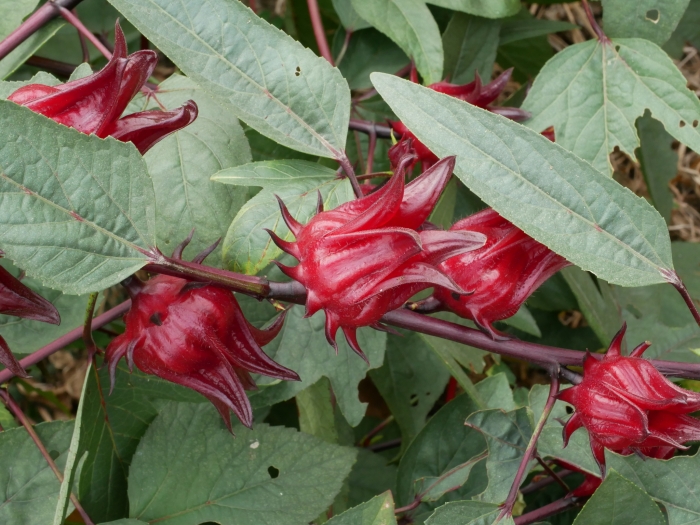Roselle
(Hibiscus sabdariffa)
Roselle (Hibiscus sabdariffa)
/
/

© Jacy Chen
CC BY 4.0

























Estimated Native Range
Summary
Roselle is valued for its edible parts and for its aesthetic appeal in gardens. It is often grown for its bright calyces, which are used to make a tart, cranberry-flavored tea and other beverages. The plant is also consumed as a vegetable, and its fibers are utilized for cordage. In cultivation, roselle prefers full sun to part shade, well-drained soil, and regular watering. It is relatively easy to maintain, but it is sensitive to frost. In tropical climates, roselle can become weedy or invasive. It is susceptible to pests like aphids and to diseases such as leaf spot and root rot.CC BY-SA 4.0
Plant Description
- Plant Type: Shrub, Herb
- Height: 4-8 feet
- Width: 3-5 feet
- Growth Rate: Moderate, Rapid
- Flower Color: Red
- Flowering Season: Summer, Fall
- Leaf Retention: Deciduous
Growth Requirements
- Sun: Full Sun
- Water: Low, Medium
- Drainage: Medium
Common Uses
Bee Garden, Bird Garden, Butterfly Garden, Edible*Disclaimer: Easyscape's listed plant edibility is for informational use. Always verify the safety and proper identification of any plant before consumption., Hummingbird Garden, Low Maintenance, Showy Flowers, Street Planting
Natural Habitat
Native to West Africa and thrives in tropical and subtropical regions worldwide
Other Names
Common Names: Roselle, Red Sorrel, Aleluya, Aleluya Roja De Guinea, Hibiscus, Indian-Sorrel, Jamaica Sorrel, Florida Cranberry
Scientific Names: , Hibiscus sabdariffa, Abelmoschus cruentus, Furcaria sabdariffa, Hibiscus acetosus, Hibiscus cruentus, Hibiscus cuneatus, Hibiscus digitatus, Hibiscus digitatus var. kerrianus, Hibiscus fraternus
GBIF Accepted Name: